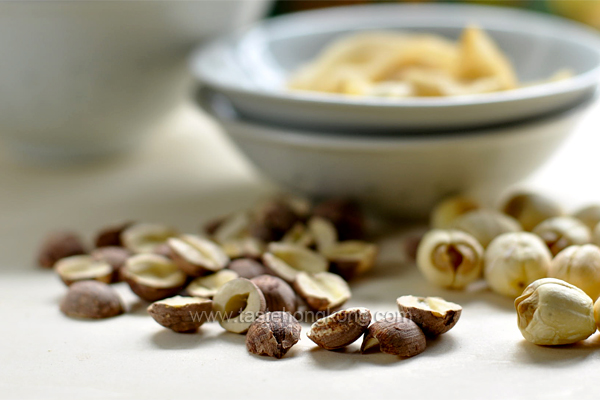
They said they had shipped 36 containers (20 feet each) of lotus seeds for making moon cakes, the iconic Mid-Autumn Festival food, this year. That was a statement I read from a print advertisement, which looked pretty much like an advertorial, put up by one of the biggest bakeries in Hong Kong.
Obviously they took pride of the figure, 650 tons to be specific; and they also emphasized that their lotus seeds were from Xiang 湘, that is Hunan, (this recipe gives a little more elaborations on this region), which has been known for producing quality lotus seeds. Using Xiang’s lotus seeds 湘蓮 almost implied that they had the best.
And the Chinese tradition has it that lotus seed is a symbolic food for bringing more offsprings to the family due to its Chinese name 蓮子 lian zi, of which ‘lian’ shares the same pronunciation of ‘continuous’ and ‘zi’, ‘son or child’. This also explains why candied lotus seeds are often served during many Chinese festivals, Chinese New Year in particular.
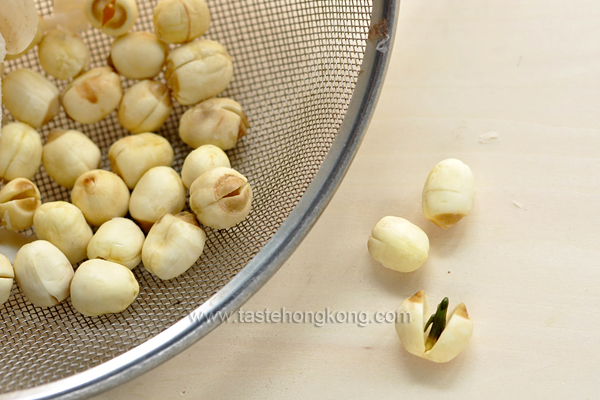
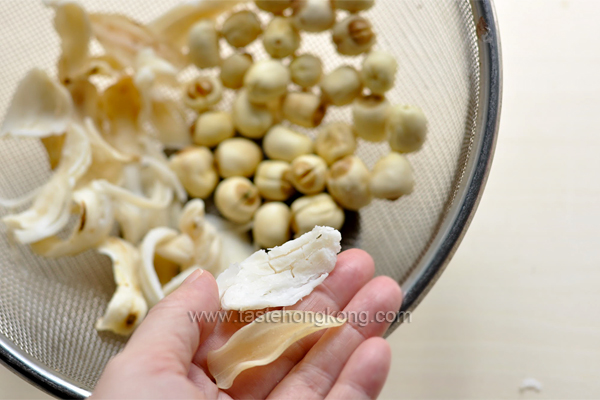
I enjoy swallowing the pureed lotus seed paste in moon cakes. That fragrance is truly addictive. However, those are pretty much the eat-once-a-year foods due to my limited capacity for the grease-laden filling (the lard or oil that was added to the pureed seeds).
Gladly, lotus seed is a healthy food, which I could eat it more often. Believe it or not, the seed is also anti-aging if you take a look here at livestrong.com, which further states, ‘The lotus flower produces edible seeds, which you can eat cooked or raw. Growers harvest the seeds in August and September, and then dry them in the sun.’.
I doubt if I have ever eaten the seeds raw (the way they are stored doesn’t seem to encourage me to so)! Like most Chinese recipes suggests, I usually cook dried lotus seeds in soups, in congee, in drinks, in desserts and, occasionally, even in stir-fries.
In additional to culinary uses, lotus seeds are often valued for its healing properties. The popular ones being calming and assisting with insomnia.
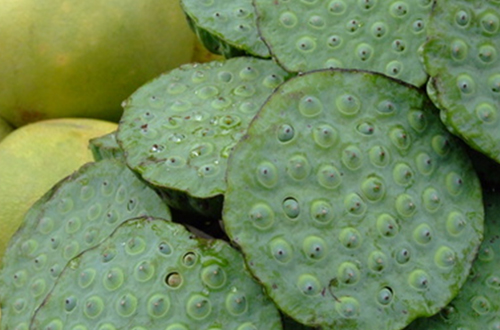
source : livingstrong.com
The drink or dessert (more often called Lotus Seed Tea) I’m sharing here perhaps is the easiest and most simple recipe to enjoy lotus seeds. This is more or less like boiling a soup. The important thing to note is that the dried lotus seed has to be soaked before boiling. Since I knew how to made this, I was told not to soak the brown ones for too long as that would wash away much nutrients from the their skins.
Pairing with dried lily bulb petals, believed to be beneficial to dry throats, is a popular way for making this sweet soup more soothing and nutritious. You may choose to boil the tea with either one type of lotus seeds. With only the white ones, the tea (if sweetened with rock sugar) will look clear. But the flavor will be less intense than with the brown seeds. Sometimes, I skip the dried flower petals but add shelled hard boil eggs toward the end of boiling.
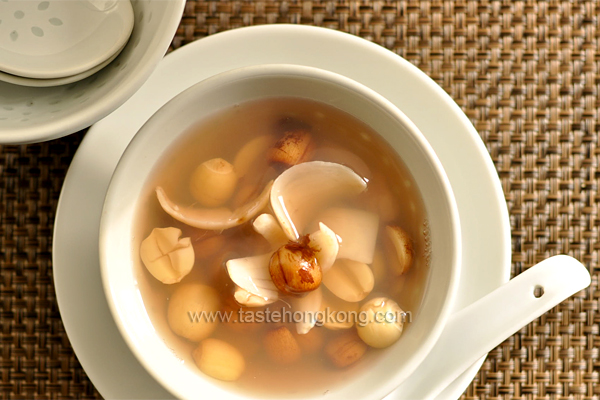
- Ingredients
- 40g dried white lotus seeds
- 20g dried brown lotus seeds
- 20g dried lily bulb petals, optional
- 6-7 cups of water
- 30g rock sugar or slab sugar, or to taste
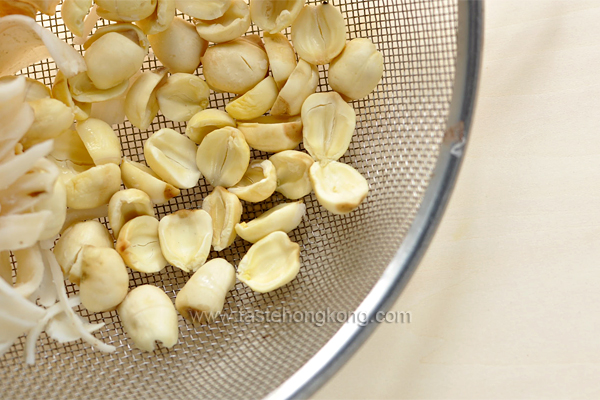
Method
Screen out any discolored seeds. Separately soak the white for about an hour and brown for about 10 minutes. If using dried lily bulb petals, soak for about half an hour, or till slightly softened (soaking time vary according to thickness of petals).
Discard water and briefly wash the dried seeds and petals. Remove germs inside the seeds, if any. You may want to split the lotus seeds for easy removal should they come in whole. (The germ taste somewhat bitter, but some like to retain it for another healing purpose – reducing heaty feelings in body.)
In a pot, add water and dried lotus seeds. Bring them to a boil. Over medium-high heat, keep boiling for 10 minutes (may leave the cover ajar to avoid over spilling). Then switch to low heat and boil for another 40 minutes.
Add lily bulb petals and sugar, switch to high heat and boil till sugar is dissolved, about 5 to 10 minutes. If you want the lily bulb petals sort of melted in the soup, either soak or cook it a bit longer.
Serve hot with the seeds and flower petals (some prefer to strain the soup, but the solid ingredients are nutritious to eat). Enjoy!
Happy Mid-Autumn Festival Everyone!
The full moon is coming soon on September 12 this year! For another healthy and seasonal eat, give baby taro a try.
White and brown lotus seeds
Any doubt on why there are two types of lotus seeds? Wikipedia has given a good account of them, ‘The brown peel is harvested when the seed head of the lotus is ripe or nearly ripe and the white is harvested when the seed head is still fully green, but with almost fully developed seeds. White lotus seeds are de-shelled and de-membraned. The bitter tasting germ of the seed is also removed at the time of harvest using a hollow needle, though some may still remain in the seed due to production oversight. Brown peel lotus seeds are brown because the ripened seed has adhered to its membrane. These seeds are usually cracked in half in order to remove the germ since the seeds are hard enough to make the germs’ removal by needle difficult.
Harvest a lotus pond
After posted a recipe on Steamed Chicken in Lotus Leaf, I received a feedback from one of my readers, telling me that he(?) has a quarter acre pond full of healthy lotus plants and would like someone to harvest them…
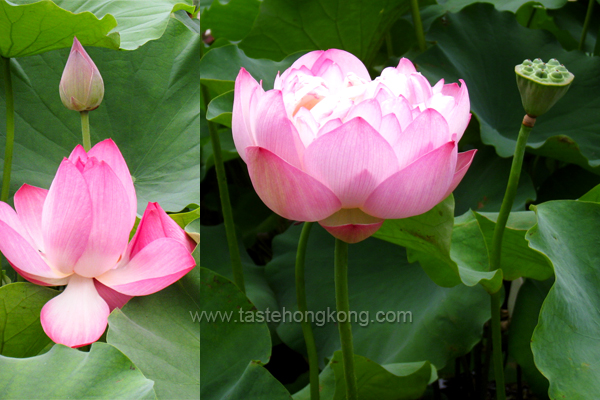
I know the harvesting is not an easy task, but that would reward him or the harvester with a decent amount of lotus seeds, lotus leaves for cooking into various dishes. He wrote to me on September 4 2011, hope this doesn’t happen too late — to contact him, you may leave your message here or send me an email (check out the ‘Contact’ section), and I’ll forward it.
- Category: Featured . Nut and Seed .
- 27 comments
To get immediate updates and new recipes from my blog, you may also SUBSCRIBE them via RSS feeds. See you there.
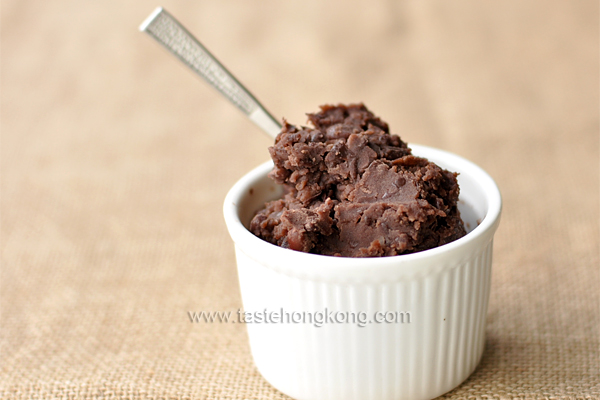
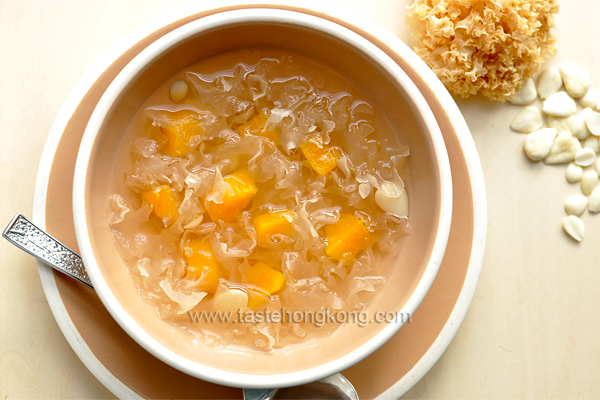
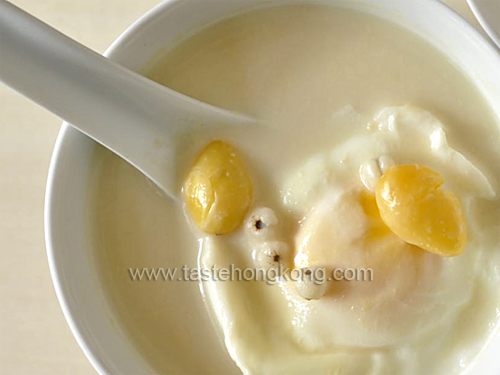
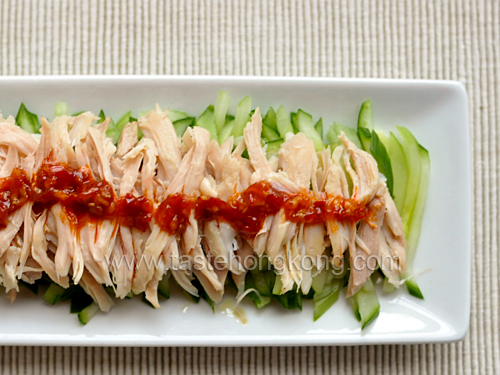
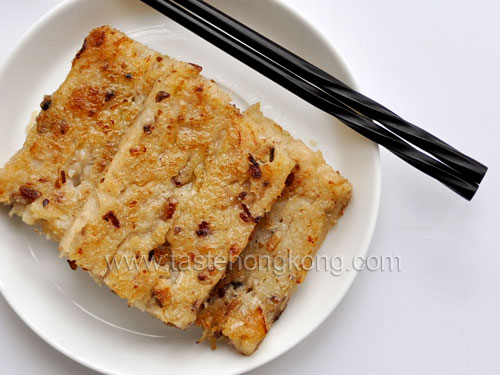
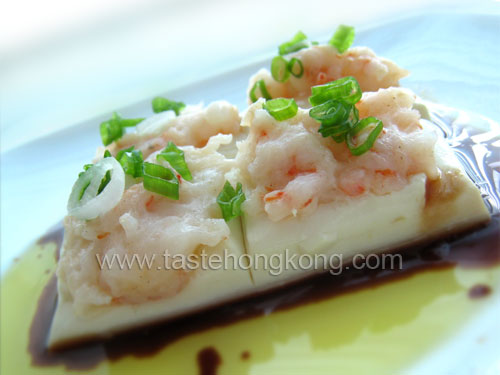
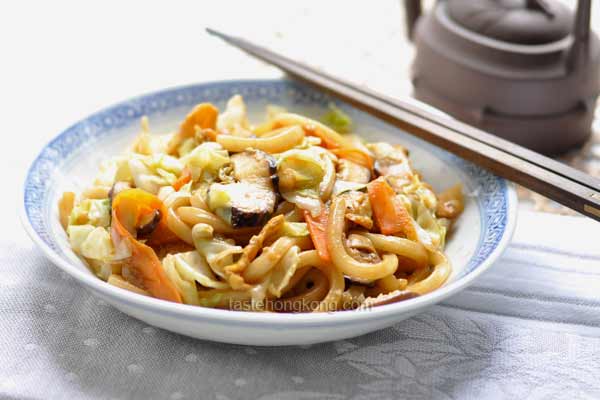
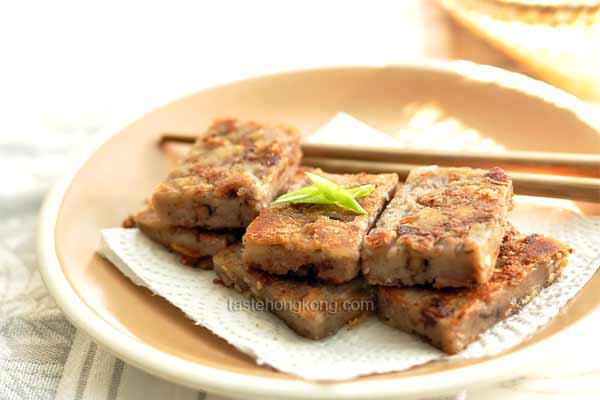
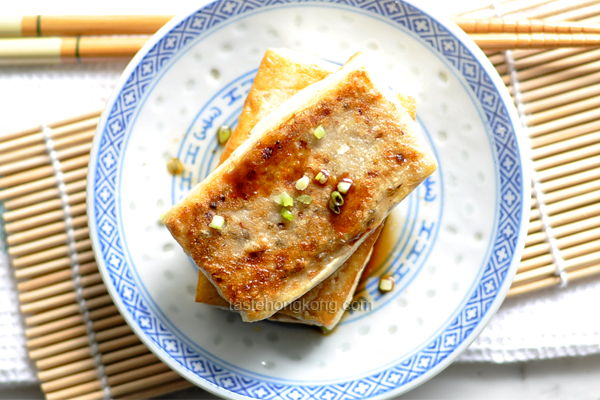
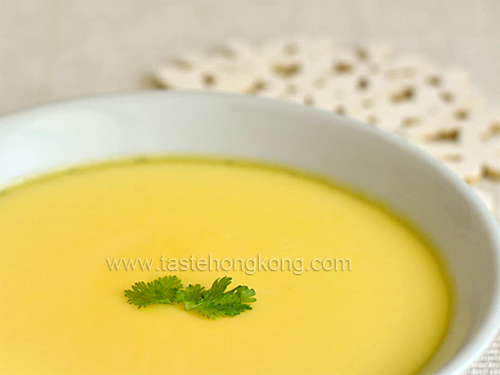
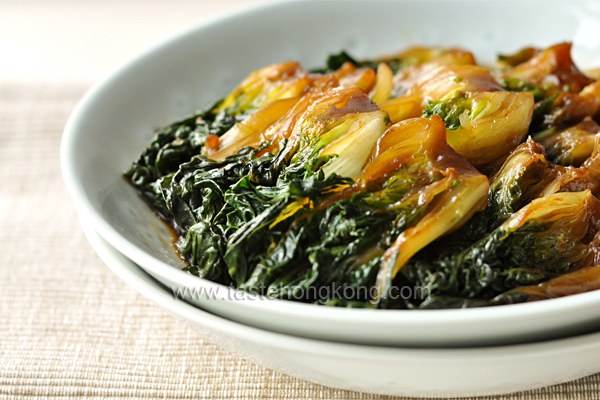



Oh, I didn’t know about the Hunan bit. Very informative!
This recipe looks scrumptious. I’m intrigued by the ingredients and flavor combinations. I haven’t tried anything like this. I am definitely going to have to try this. I also love learning new things. Thanks!
I know that 蓮子 is auspicious in some sense but I did not know about the continuity of offspring it is supposed to symbolize. Thanks for sharing such an interesting piece. Love your “tong shui” too. Nourishing….
@pigpigscorner,
I hope so : ).
@Russell at Chasing Delicious
This is quite an ‘old-fashioned’ Chinese sweet soup, hope you will try it soon, and enjoy!
@tigerfish,
Please don’t mention it : ).
I love the soup dessert. Just don’t really have it here 🙁
I have never thought of cooking both types of lotus seeds in sweet soup. Got to give it a try soon. Thanks for sharing.
Nice and cooling sweet soup… My mother-in-law used to make some during mooncake festivals 😀
I’ve only ever seen lotus in a field so I find this post so interesting. I have never heard much about the seed or the soup as you have here. Beautiful!
@penny aka jeroxie,
@food-4tots,
@Lisa H,
@Lori,
Thanks for dropping by and your kind comments!
Waiting to admire the full moon (but the weather forecast suggested that she might be a little bit shy tonite), anyway, wish Every One a happy Mid-Autumn Festival!
Your lotus seed dessert looks good, yum yum. I like this sweet soup.
40g dried white lotus seeds
20g dried brown lotus seed
What the difference?
@Amelia,
Thanks! Hope you will enjoy it soon!
@chin oil in,
The flavor of brown lotus seed is relatively pungent than the white. You may adjust their proportions to your liking. And, ‘ … You may choose to boil the tea with either one type of lotus seeds. With only the white ones, the tea (if sweetened with rock sugar) will look clear. But the flavor will be less intense than with the brown seeds … ‘.
p.s. The ‘brown seed’ should be in plural, which is now corrected.
36 20-foot containers? WHOA 😀 That’s a lot of mooncakes!
Thanks for sharing this recipe, I’ve never tried making this before actually, it looks so nourishing so ‘yun’. Btw, also wanted to drop by and let you know that I’ve changed the name of my blog from “Tastes of Home” to “Smoky Wok” 😀
Happy belated Mid-Autumn’s!
@ Smoky Wok (Jen),
I believe that bakery also shipped some quantities overseas.
Yes, this sweet soup is nourishing, hope you’ll soon try it out and enjoy.
I’m heading to your Smoky Wok now … : )
You know, I never like lotus seeds growing up but maybe it’s time to give it another try. This looks really good.
@gaga,
I see. But thanks for your interests and kind comment!
I miss this…it has been AGES since I last had it…sighs…and I will look out for the brown lotus seed next time when I visit the Asian stores here.
I just have a few soaked lotus seeds to use but no lily bulb petals… As I don’t really imagine to put hard-boiled egg in a sweet soup (but maybe should I just give it a try ?!), could you tell me if there is a great taste difference between lily bulb petals and dried lily buds, which I have at hand ?
Thanks in advance and happy dragon boat festival !
@Helena,
Thanks, you too!
I guess the dried lily bulb you refer to is the golden needle vegetable (as detailed here). It should be a different food than dried lily bulb petal. The sweetness of dried lily bulb petal is more subtle than golden needle vegetable. After boiled enough, the petal will turn starchy whereas the bulb (let me call it daylily bulb) will retain the texture as if it is a leafy veggie.
If not hard-boiling, you may consider poaching the egg like this.
Hope these help, and enjoy!
Thanks for your advices. I finally choose to follow your first variation of the recipe, without lily bulb petals but with a hard-boiled egg, and it was not so bad ! I’m not really accustomed to this kind of taste and texture combination for a treat, but I actually think I could quickly get used to it 🙂 Pleasantly surprising, truly. So once again, thank you !
Hi, thanks for sharing these information! I am wondering is there a particular reason for the longer soaking time of the white one?
@Lilium,
You are welcome!
The texture of white lotus seeds is usually firmer than the brown. Besides, it is easier to spit the white ones and remove the germs (if any) as they are softened. But the brown ones, for culinary purposes, are often split.
[…] here. Found a how-to here. Luckily, the ones I had already had the germ taken out but there were a few that were missed. […]
[…] “soup”, the sequel, with bulb petals. Followed the instructions to the letter from here. No ginger nor peanut butter this time. OMG!, I actually followed a recipe, without substantial […]
Does anyone know of a company selling quality, pesticide-free lotus seeds and lily bulb petals in the USA?
I had this soup in China and would like to make some at home.
I just got today the dried lotus seed, white ones. I will try your soup today. Please I have a question at the same Asian Market, I bought DUCK WHEAT, do you have a recipe that goes with that? Your Blog is great.
Thank you